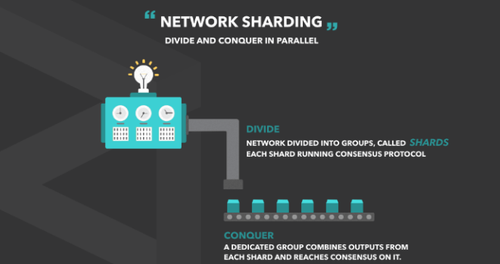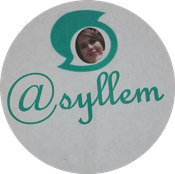6,700 STEEM (1,300 USD)~ Sponsored Writing Contest: Harmony - My entry

Attending the gentle call of @OriginalWorks & CateredContent.com, to the writing contest sponsored by Harmony for CateredContent.com, with much joy I share my learning in relation to the Blockchain Harmony, which became one of the most important in the world, and we will see why.
I want to point out that I'm not an expert on the subject, yet I feel satisfied with the little I learned, thanks to the invitation to this contest. I hope it can be didactic for other apprentices in the world of cryptography.

First things first...
¿What is Blockchain?
For a few years now we have been hearing, in increasing proportion, about the chain of blocks (invented by Satoshi Nakamoto in 2008), and many will still wonder what it is?
A blockchain is a list of records, called "blocks" that are linked together using cryptography where, to avoid going too deep, each block has a time stamp and data, so each record is resistant to modification. Then the chain of blocks works like an open book, in which transactions between two or more parts are stored efficiently, which offers the user: transparency and verifiability, among other advantages. It's a pretty broad topic, but I'm going to stop here, because there's so much more to say.
Now, the chain of blocks was designed to serve as the public book of the very famous cryptomoneda Bitcoin (BTC), to facilitate the transfer of dapps in the Ethereum network. Currently the BTC works more as a store of value, than as a means of massive payment or development of DAPPS, but for the massification of the use of other crypto currencies, it requires scalability of the chain of blocks, to be able to perform multiple transactions simultaneously and effectively.
As highlighted by CZ (Changpeng Zhao) CEO and founder of Binance:
"Scalability remains one of the key problems of the block chain industry, which we, as an industry, must try to solve as effectively as possible".
And this is where Harmony, he said present, to overcome the challenge.

Now let's talk about Harmony
Harmony, with its ambitious team of "business and engineering experts," brings to the table the solution to this problem using "sharding" to parallelize transaction processing. Sharding consists of dividing the "computational tasks of a database into smaller segments (called fragments)," in order to make the job easier.
Harmony has been able to innovate by solving the problems encountered by industries such as: Zilliqa, Omniledger and RapidChain, using strategies to reorganize nodes without interruption, and designs a complete PoS-based fragmentation scheme that is "linearly scalable and probably secure".

Harmony has learned from both industry and academia in the development of its own linear scaling system, and a safe and verifiable scaling scheme.

So, the commitment of this prestigious team is to open blockchain technologies for millions of people simultaneously, which will allow them to make a significant contribution to address the problem of scale.
Therefore, Harmony is a Proof of Stake block chain, fully scalable and secure. I also think it's important to mention that it's completely open source since January 2019 and provides key innovations in "the use of state fragmentation (secure stakeout and reorganization with decentralized randomness) and peer-to-peer networks.
Having surpassed Mainnet in its Phase 1, which was launched on June 28, with 600 nodes, making it one of the "15 most important decentralized networks," it launches its Phase 2 which aims to "add 4 fragments with 400 nodes each, for a total of 1600 nodes, which also includes "an exchange of tokens for the native ONE token, the intelligent betting contract and token transfers.
"Harmony's mission is to scale trust for billions of people and create a radically fair economy," said Harmony CEO Stephen Tse.

Among so many other benefits, Harmony:
It helps companies personalize their assets and encourage user participation.
It creates an open economy for "business data exchange," while protecting "consumer privacy. What normally takes years for companies, such as forming data pools, ad exchanges and credit ratings, is now simpler.
In the automotive sector, for example, there is great expectation based on the blockchain, I found an article in Spanish, which refers to a significant increase in the use of blockchain technology in "the automotive, aerospace and aviation industries," due to its "transparency, speed in the settlement of transactions and the elimination of the risk of fraud. Source
Definitely for the virtual financial system: banks, virtual payment platforms, exchanges, and other financial institutions that invest a lot of money in computer security engineers, to protect all the data they handle, the use of blockhain is of great help. Also for the military field, business, communications ... I think the blockchain is here to stay and more and more are solving the challenges in terms of requirements for mass use. I believe that at the beginning it was only an expensive database and now it is a functional mega-record of data.

Sources:
cateredcontent.com
criptopasion.com
thebtctimes.com
es.cointelegraph.com

The main image I designed in PowerPoint from the logos of Steemit, Original Works, CateredContent.com and Harmony and the last one, where I am with my user name, is a photograph with my own Steemit logo. The other images have their source.